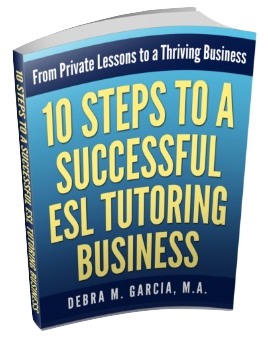Teaching Simple Present Verbs
to ESL Students
Effectively teaching Simple Present tense verbs to ESL students helps to build a strong foundation for their use of the English language. The Simple Present tense (also called the Present Simple tense) is usually the first verb tense English language learners are taught.
Three components are essential to teaching any verb tense to ESL/EFL students:
(1) Verb conjugation,
(2) Verb form, and
(3) Verb function.
Each of these components is covered on this page about teaching Present Simple verbs.
See ESL Verb Tenses for a thorough discussion on teaching verbs to adults learning ESL.
Simple Present Verb Conjugation of Regular Verbs
Verbs must be conjugated for each of these subject pronouns: I, You, She/He/It, They, and We. Here are some examples using miscellaneous common verbs.
- I talk. I walk. I dance. I think.
- You talk. You walk. You dance. You think.
- She/He/It talks. She/He/It walks. She/He/It dances. She/He/It thinks.
- They talk. They walk. They dance. They think.
- We talk. We walk. We dance. We think.
Teaching Simple Present verb conjugation is often started with common, everyday verbs the student can mostly likely use. There isn't any particular pattern (as in the Present Continuous, for example) to help the student. He or she must simply memorize the conjugation, paying special attention to the ending "s" used for the third person.
Simple Present Tense Verb Forms (five forms the ESL student must learn)
- Affirmative Usage (I talk. You talk. She/He/It talks. They talk. We talk.)
- Negative Usage (I don't talk. You don't talk. She/He/It doesn't talk. They don't talk. We don't talk.)
- Yes/No Questions (Do I talk? Do you talk? Does she/he/it talk? Do they talk? Do we talk?)
- Short Answers (Yes, I do. No, I don't. Yes, you do. No, you don't. Yes, she/he/it does. No, she/he/it doesn't. Yes, they do. No, they don't. Yes, we do. No, we don't.)
- WH- Questions (e.g., When does she talk? Why does he talk? Where do they talk? How does it talk? etc.)
Present Simple Functions (when to use the Present Simple)
The Present Simple verb tense has two primary functions:
- To talk about general truths, that is, to talk about something that was true in the past, is true now, and will be true in the future (e.g., The sun rises in the East. Nurses work hard. Water boils at 100 °C.)
- To talk about habits or rituals (e.g., I pay income taxes every year. She drinks coffee. We watch T.V. all the time. The San Francisco Giants always lose. It never rains in California.)
After a lesson teaching Simple Present verbs to students, the ESL teacher can also introduce "clue" words, such as "always," "never," "often," etc., to help the student better understand and use the Simple Present.
Student Challenges
Here are the challenges ESL students and EFL students have when learning the Simple Present.
- Remembering that the Third Person (he/she/it) of a regular verb takes an "s."
- Remembering to use the helping verb "to do" to form questions, negative statements, and short answers.
- Conjugation of irregular verbs is another difficult thing about the Present Simple. Very common verbs (e.g., "to be") do not follow the rules and simply must be memorized.
Additional Resources
For a more thorough explanation of verb tenses and lessons for teaching Simple Present verbs, including irregular verbs, I use Azar's, Understanding and Using English Grammar. This resource is best for intermediate to advanced English Language Learners.
Azar's books are not only great for learners but also help teachers as well. See my ESL Textbook Evaluation page for textbook recommendations for lower levels.
From Teaching Simple Present
to Teaching ESL to Adults Home


New! Comments
Have your say about what you just read! Leave me a comment in the box below.